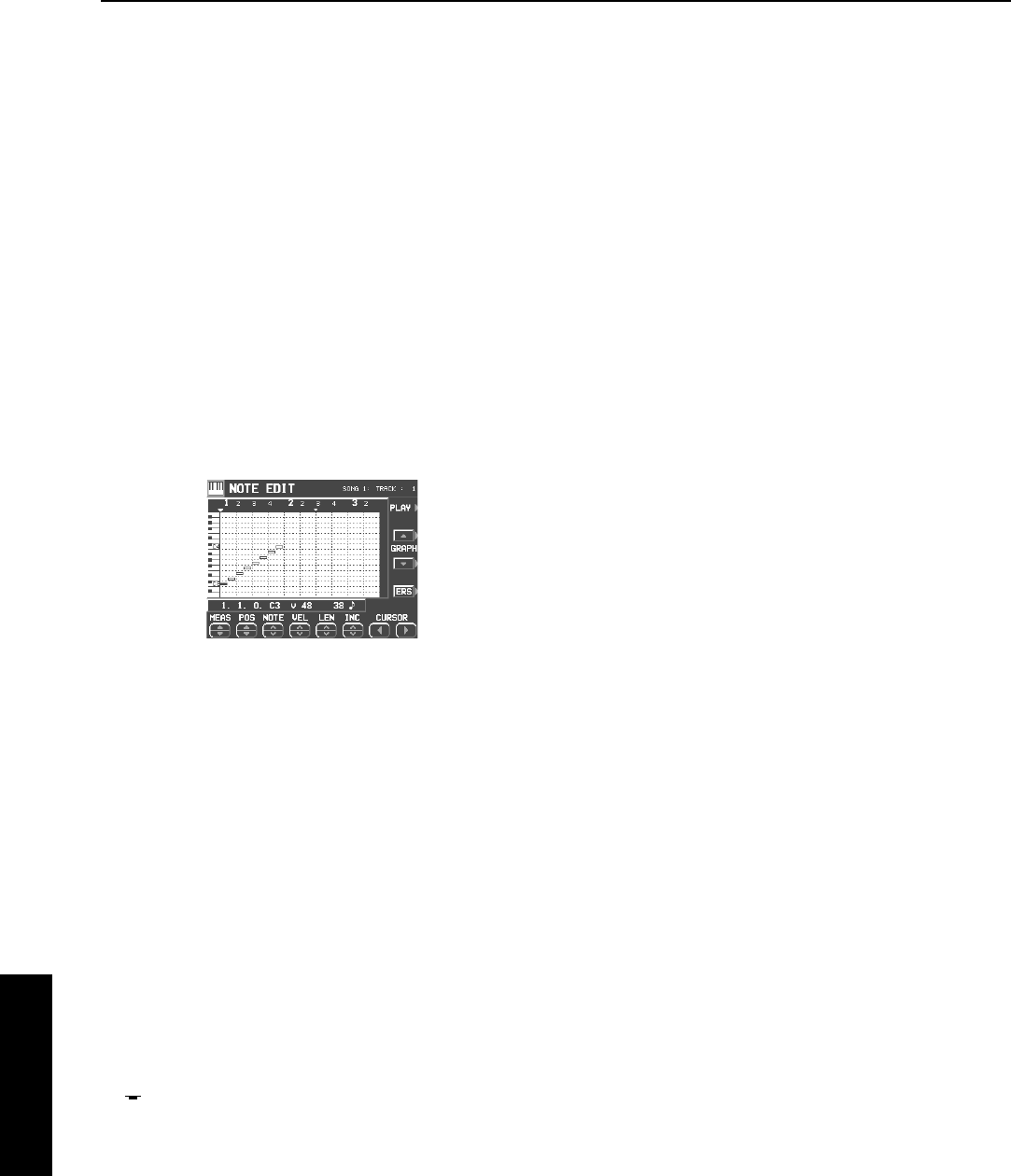
Part IV Sequencer
94
QQTG0692
Sequencer
Note Edit
You can edit performance (NOTE) data on a piano roll display. This differs from the normal STEP
RECORD edit procedure, and is a convenient way to check the data for each note.
• Data other than NOTE data cannot be corrected or recorded. To correct or record other types of data,
use the STEP RECORD display. (Refer to page 86.)
1.
On the SEQ MENU display, select RECORD
& EDIT.
2.
On the RECORD & EDIT display, select
NOTE EDIT.
3.
On the PART SELECT display, select a track.
• The CHORD, RHYTHM and CONTROL tracks
cannot be selected.
• The display looks similar to the following.
4.
Use the MEAS ▲ and ▼ buttons to select the
measure you wish to edit.
5.
Use the CURSOR
ᮤ
and
ᮣ
buttons to move
the cursor ( ▼ ) to the point you wish to edit.
• Recorded performance (NOTE) data is shown
as horizontal bars. Data selected for editing is
highlighted.
• You can use the INC
∧
and
∨
buttons to
change the increment of cursor movement.
The resolution can be set at
q
/96. However, if
NOTE data is present between increments,
the cursor will stop.
• Use the POS ▲ and ▼ buttons to change the
value.
• Example: 10.2.48 indicates a point in measure
10, beat 2, point 48 (one point is 1/96 of a
quarter note [
q
]).
• is shown at the point where the END com-
mand is stored.
6.
Select the data to edit (it changes to a high-
lighted horizontal bar). Edit the data.
• Use the POS ▲ and ▼ buttons to move the
cursor, the NOTE
∧
and
∨
buttons to change
the note number, the VEL
∧
and
∨
buttons to
change the velocity (how hard the keys are
played), and the LEN
∧
and
∨
buttons to
change the note length (1 = 1/96 of a quarter
note [
q
]).
• Use the GRAPH ▲ and ▼ buttons to view a
higher or lower section of the keyboard (in
one-octave steps).
• If the ERS button is pressed, the selected
NOTE data is erased.
7.
Repeat steps 4 to 6 to continue editing.
Ⅲ
ⅢⅢ
Ⅲ
Inserting note data
You can also store note data on this display.
1.
Specify the point where the new note data will
be stored.
2.
Use the LEN
∧
and
∨
buttons to specify the
note length.
• Examples of note lengths (
q
= 96)
91: tenuto (95%)
76: normal (80%)
48: staccato (50%)
24: cutting (25%)
3.
Play a key on the keyboard to specify the note
pitch (NOTE NUMBER) and velocity (how
hard the key is played).
4.
Repeat steps 1 to 3 to input more note data.
09_Part IV.fm 94 ページ 2003年2月5日 水曜日 午後1時34分


















